That’s how they say Happy New Year in Vietnam! Monday, January 23, marked the first day of the Lunar New Year (Tet), and Charlie and I somehow managed to arrive in Vietnam just in time to enjoy the preparations for the Tet festival. We also had the opportunity to join in the New Year’s Eve celebrations Sunday night in Hoi An. We thought you might enjoy a brief recap of what we’ve learned and experienced thus far. This is your “Vietnamese New Year 101.”
New Years here in Vietnam is a time for family and renewal. Upon arrival in Hanoi one week ago, we noted crowds of people waving yellow flowers to greet their relatives arriving for the New Years festivities. Flowers and fruit play an integral role in the New Year traditions of the Vietnamese people. The kumquat tree with its bright orange fruit symbolizes prosperity, while the peach blossom symbolizes joy and happiness. This holds true for both the north and the south; however, as you move southward toward central Vietnam, you will find an abundance of yellow chrysanthemum as well as the Mai Tree which flourishes in the south. It is cost-prohibitive in the north. The golden blossoms of both are symbolic of luck and prosperity for the coming new year.
You can feel the excitement in the air as people are rushing about the markets, buying new clothes, and repainting their houses to welcome the new year.In many cases, families, businesses, or government agencies may lack the time or money to decorate for the New Year; however, the desire to have “something new” for the New Year prevails. Among the more common “discount decor” is to paint the base of trees white. Charlie and I thought they were trying to ward off pests, but no…..they were decorating for the New Year. No matter their circumstances, the Vietnamese have a charming New Year custom of giving “lucky money.” A nominal sum of money…usually 20.000 dong (approximately $1 US)…is enclosed in a small, bright red envelope. Thousands of these envelopes are exchanged amount friends, family, associates, and often total strangers over the course of the New Year festivities. We visited a remote village outside Hue on New Years Day and met up with two little girls making their way into town to collect “Lucky Money.
As you wander the markets, you find that almost every vendor has an abundant inventory of yellow water melon and baskets of the red seeds hiding inside. The golden melon represents prosperity….the seeds represent happiness. On New Years Eve here, every home and business will hide the brooms. For the next 12 hours, the watermelon seeds, chrysanthemum blossoms, and everything else remains on the floor, and even bathing will be delayed until after midnight. Our guide, Mai (pronounced MY) tells us that the Vietnamese want to hang on to the luck and happiness from the prior year….”not sweep it out,” as she explains.
As the New Year approaches, the alters of temples and pagodas are laden with baskets of fruit offerings. Sunday night (New Years Eve), as we made our way through the crowds, we noticed that nearly every home and business had an altar with a basket of fruit, rice, and incense in front. We also noticed that a small paper horse was suspended from many of the alters. Mai explained that the paper horses are burned at midnight as an invitation for the ancestors to return for the three-day New Years festival. Ancestral worship is central to family life here. Earlier that morning, we rode bicycles from our hotel outside Da Nang to a local farming village. All along the way we noticed the streets were “littered” with rice and colorful wrapped candies. Mai explained that these are offerings to pave the way for the ancestors so that their journey isn’t blocked by the devil.
New Years Eve in Hoi An was quite an experience. The streets were packed with families, young couples, and a respectable number of tourists. After a late dinner, Charlie, Mai, and I joined the crowds gathered along the river bank. Custom dictates that the people pray over small paper lanterns which are then set afloat in the river. Over the next couple of hours the river gradually became filled with the lanterns. As midnight grew closer, we were treated to traditional Vietnamese dancing, and just before midnight, the countdown began–no crystal ball like the one in Times Square; however, there was a large neon sign that flashed the countdown from ten seconds. At the stroke of midnight, the crowd cheered, and the local authorities set off one of the most impressive fireworks displays we’ve ever seen. The celebration continued for a full half hour. When the fireworks were over, the streets were once again packed with minibikes and bicycles as the locals made their way back home.
Unlike our New Year celebrations in the US, the festivities here last a full three days, and the festival will conclude tonight. Charlie and I arrived in Saigon yesterday to find the city bathed in flowers and lights, and streets here packed. The home altars now include “new clothes” for the deceased ancestors to make their return journey. We saw hats, shoes, jewelry, and money that will be burned as an offering tonight, thus, marking the end of the third and final day of the New Year. Tomorrow, the decorations will come down, and people will return to their homes, schools, and offices. Charlie and I will be moving on to Cambodia late tomorrow afternoon. We have enjoyed our stay here in Vietnam, and we’re already making plans for a return visit…..hopefully in time for another New Year celebration.

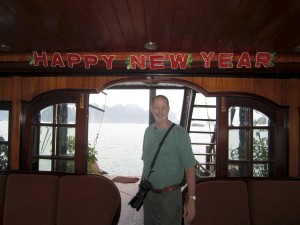
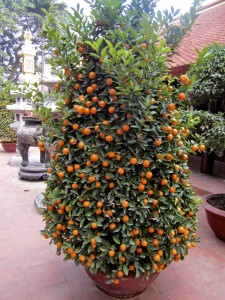
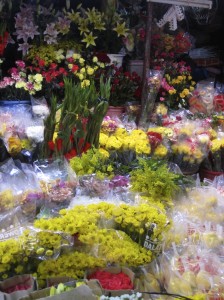
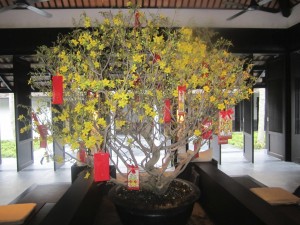
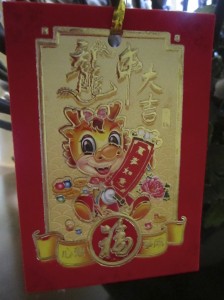
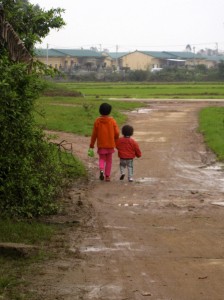
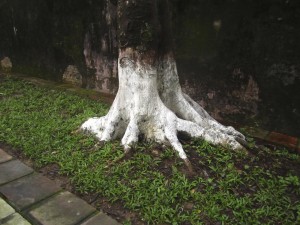
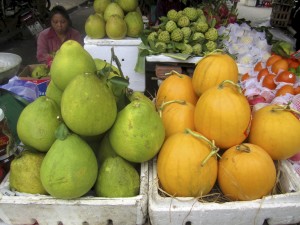
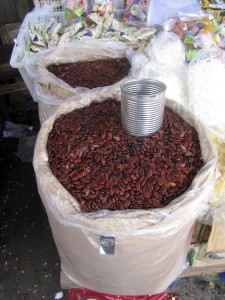
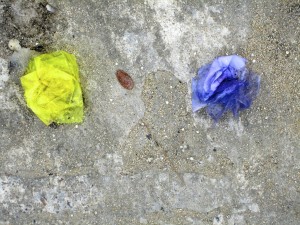
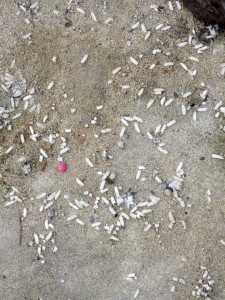
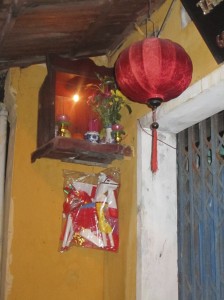

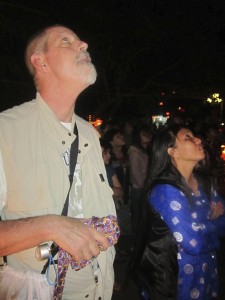
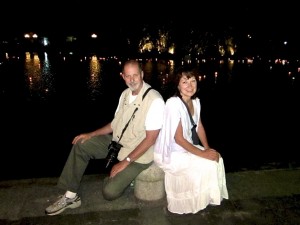
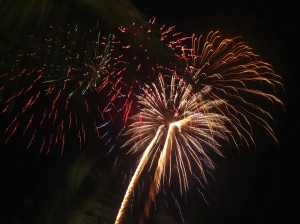
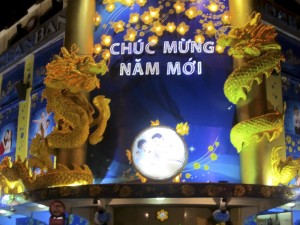

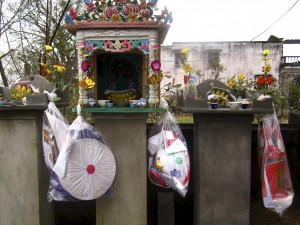
I am still jealous.
Thank You, now I know a great time to visit. I was in Saigon for Tet 1969 the year following the Tet 1968 Offensive, festivities were somewhat suppressed.
I did get to go to an Embassy office party, I remember those Red Watermelon seeds and a very rich dish in a sheet pan that seemed to be some kind of congealed fat. All those skinny people could use the concentrated calories but I stuck with the seeds.
John